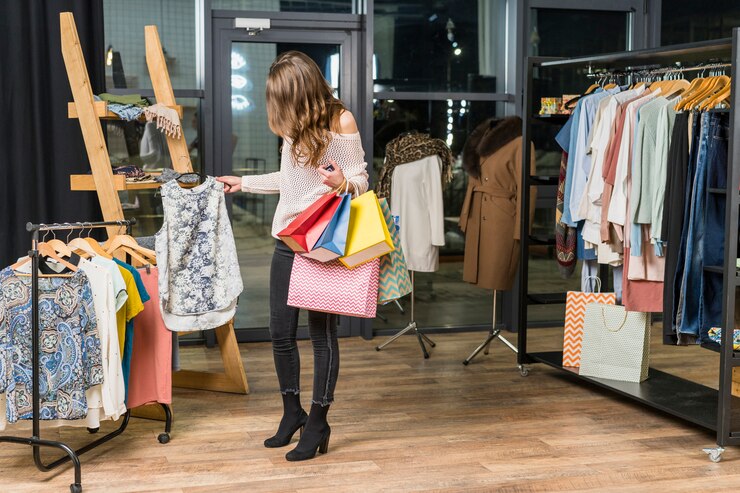Introduction: Fashion retailing has always been a dynamic and evolving industry, shaped by cultural shifts, technological advancements, and changing consumer preferences. Today, fashion retailers face a unique set of challenges and opportunities as they navigate a rapidly transforming landscape.
Fashion History
Early Beginnings
Fashion retail traces its roots to ancient marketplaces where merchants sold fabrics and garments. As civilizations progressed, fashion became a symbol of status and identity. For more blog Fashion Magazines.
20th Century Transformations
The 20th century saw significant changes in fashion retail with the rise of department stores, ready-to-wear collections, and global fashion weeks that set the stage for contemporary retail practices.
Key Designers and Brands
Iconic Fashion Houses
Brands like Chanel, Dior, and Gucci have set high standards in the fashion industry with their timeless designs and innovative marketing strategies.
Emerging Designers
New designers bring fresh perspectives, challenging traditional norms and pushing the boundaries of fashion with unique and sustainable creations.
Fashion Shows and Events
Major Fashion Weeks
Events in New York, Paris, Milan, and London showcase the latest trends and set the tone for upcoming seasons.
Local and Niche Shows
Smaller, local fashion events and niche shows highlight emerging talent and specialized markets, contributing to the diversity of the fashion landscape.
Trend Analysis
Current Trends
From minimalist aesthetics to bold, eclectic styles, current fashion trends reflect a blend of nostalgia and modern innovation.
Future Trends
The future of fashion points towards sustainability, technology integration, and a focus on inclusivity and diversity.
Style Tips
Wardrobe Essentials
Invest in classic pieces like a tailored blazer, quality denim, and versatile accessories that can elevate any outfit.
Seasonal Trends
Stay updated with seasonal trends by incorporating key pieces like statement coats for winter or floral dresses for spring.
Sustainability in Fashion
Eco-Friendly Materials
The use of organic cotton, recycled fabrics, and biodegradable materials is becoming more prevalent in the industry.
Ethical Practices
Brands are increasingly adopting fair trade practices, ensuring ethical production processes and better working conditions for laborers.
Technology in Fashion
E-commerce and Digital Platforms
Online shopping and digital platforms have revolutionized the retail experience, offering consumers convenience and a wider range of choices.
Wearable Technology
Innovations like smart fabrics and wearable tech are merging fashion with functionality, providing new dimensions to everyday clothing.
Celebrity and Cultural Impact
Celebrity Influence
Celebrities play a crucial role in shaping fashion trends through endorsements, collaborations, and their public appearances.
Cultural Shifts
Fashion reflects and influences cultural movements, serving as a medium for expressing social and political identities.
FAQs
What are the current trends in fashion retail?
Current trends in fashion retail include a mix of minimalist aesthetics, bold eclectic styles, and a strong focus on sustainability. There is also an increasing emphasis on inclusivity and diversity within fashion collections.
How has technology impacted fashion retail?
Technology has significantly impacted fashion retail through the rise of e-commerce, enabling consumers to shop online conveniently. Wearable technology and smart fabrics are also merging fashion with functionality, adding new dimensions to clothing.
What is the importance of sustainability in fashion?
Sustainability in fashion is crucial as it addresses environmental and ethical issues. This includes the use of eco-friendly materials, fair trade practices, and efforts to reduce the industry’s carbon footprint, ensuring a more sustainable future.
Who are some key designers in the fashion industry?
Iconic fashion houses such as Chanel, Dior, and Gucci have significantly shaped the industry. Emerging designers also play a vital role, bringing fresh perspectives and sustainable practices to the forefront.
How do fashion shows influence the industry?
Fashion shows, especially major fashion weeks in New York, Paris, Milan, and London, set the tone for upcoming seasons by showcasing the latest trends. Local and niche shows also highlight emerging talents and specialized markets.
How can consumers stay updated with fashion trends?
Consumers can stay updated with fashion trends by following major fashion shows, reading fashion magazines and blogs, and observing celebrity styles. Social media platforms and fashion retail websites also provide regular updates on the latest trends.
What role do celebrities play in fashion?
Celebrities influence fashion trends through endorsements, collaborations with designers, and their public appearances. They often set trends that are quickly adopted by the public and fashion retailers.
Conclusion
Fashion retail is a complex and multifaceted industry that continues to evolve. By staying informed about historical influences, current trends, and future developments, both retailers and consumers can navigate this dynamic world with confidence and creativity.

